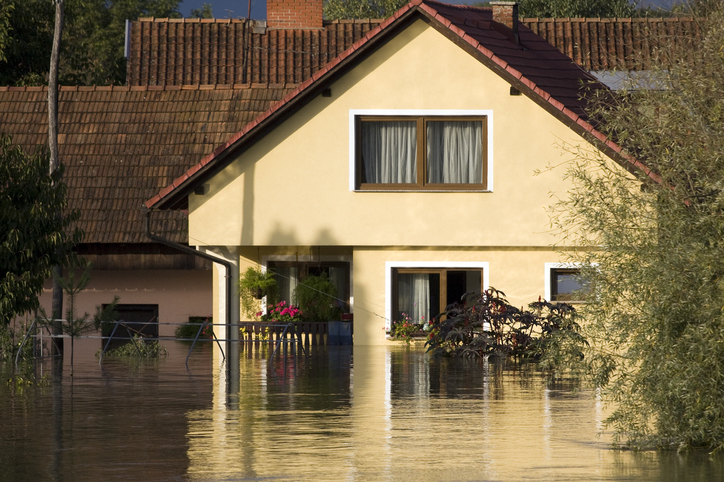Arkansas is #1 for Flooding in the US
According to the Federal Emergency Management Agency, floods are the most common natural disaster in the US, and from 2008-2017, Arkansas had more floods than any other state. Water damage can be incredibly expensive. Just a few inches of water may ruin flooring and furniture and short out expensive appliances and electrical equipment. The average flood claim is about $40,000. If you don’t already have flood insurance, you should consider getting it now. You can purchase flood insurance even if you’re a renter rather than a homeowner.
Why Arkansas Tends to Flood
Arkansas is inland, but the state is rich in water resources. We have the Buffalo, the Mississippi, the Little Missouri, the Arkansas, the Red, the White, and many other rivers in addition to big recreational lakes, reservoirs, and creeks. Even so, a lot of Arkansans may not think much about flooding.
Flooding is often way down our list of concerns than tornado damage. This is despite the fact that floods cause more damage than tornadoes, thunderstorms and hurricanes combined. Your homeowners policy may cover wind and hail damage. Water damage from flooding is not covered.
People in “low risk” areas file 20 percent of the flood claims in a given year and receive a third of the pay-outs.
The History of Flooding in Arkansas
The Great Flood of 1927 is legendary for the amount of land affected (6,600 square miles and 36 out of 75 Arkansas counties) and the massive amount of destruction it caused. But there have been many more recent floods of note, as well. This August, sheriff deputies had to rescue people by boat from homes in Clinton. Their historic downtown was deluged with eight feet of water from only six hours of heavy rain.
In 2017, flash floods killed eight Arkansans throughout the state. Eighteen died from flooding in 2011, the highest number of flood-related fatalities in any state that year. In 2010, flash floods killed over 20 people in a single morning near Langley, with the Little Missouri river rising almost eight feet an hour at times. In March of 2009, heavy rains caused rivers to reach their highest levels in nearly a century, triggering major flooding. Portions of Burns Park in North Little Rock close due to flooding almost every year. The banks of the Arkansas River in downtown Little Rock disappear under water a couple of times a year.
“Low Risk Flood Zones” are Still at Risk
Even if you live outside of a flood zone, it’s a good idea to have a flood policy. When Katrina hit, many victims in both Louisiana and Mississippi didn’t have flood insurance because they weren’t in designated “flood zones.” In fact, people in “low risk” areas file 20 percent of the NFIP claims in a given year and receive a third of the pay-outs. Causes of flooding include heavy rain, snow, overflowing bodies of water, and infrastructure issues—aging dam, drainage or water systems.
Flood insurance also covers mudflow, which may be a concern if you live on a hill. In February of 2017, a dike on the Little Red River collapsed, causing a mudslide that damages multiple homes in Pangburn. At least 10 homes were hit by the mud and five were flooded. In 2015, a mudslide destroyed a home in Madison County.
If you live in an area at high risk for flooding (check that out by entering your address here), there is a 26 percent chance your house will flood over the course of a 30 year mortgage. Your house is actually twice as likely to be damaged by water than fire. You must carry flood insurance for a house in a flood zone before a bank can approve your mortgage.
Don’t rely on federal disaster assistance to pay for flood damage if you don’t have insurance. Usually federal disaster assistance is a low-interest loan, not a pay-out.
Purchase Flood Insurance For Your Home
Flood Insurance is available from private companies through FEMA’s National Flood Insurance Program. You can purchase one of these flood policies through us at Farm Bureau Insurance. Our agents can also place coverage for Private Flood Insurance through one of our Brokerage Companies.
The cost of flood insurance varies depending on your policy, your home’s location, and whether you are a renter (and therefore, just insuring contents) versus a homeowner (in which case, you would probably want to insure contents and the structure). It’s important to note that NFIP coverage tops out at $350,000, so you may need supplemental coverage, depending on your home’s value. Talk to a Farm Bureau agent today about your flood insurance needs—the sooner the better! Most policies take 30 days to go into effect, so this is one type of insurance you don’t want to delay on or to allow to lapse.
Sources
https://www.anrc.arkansas.gov/divisions/water-resources-management/flood-insurance/

